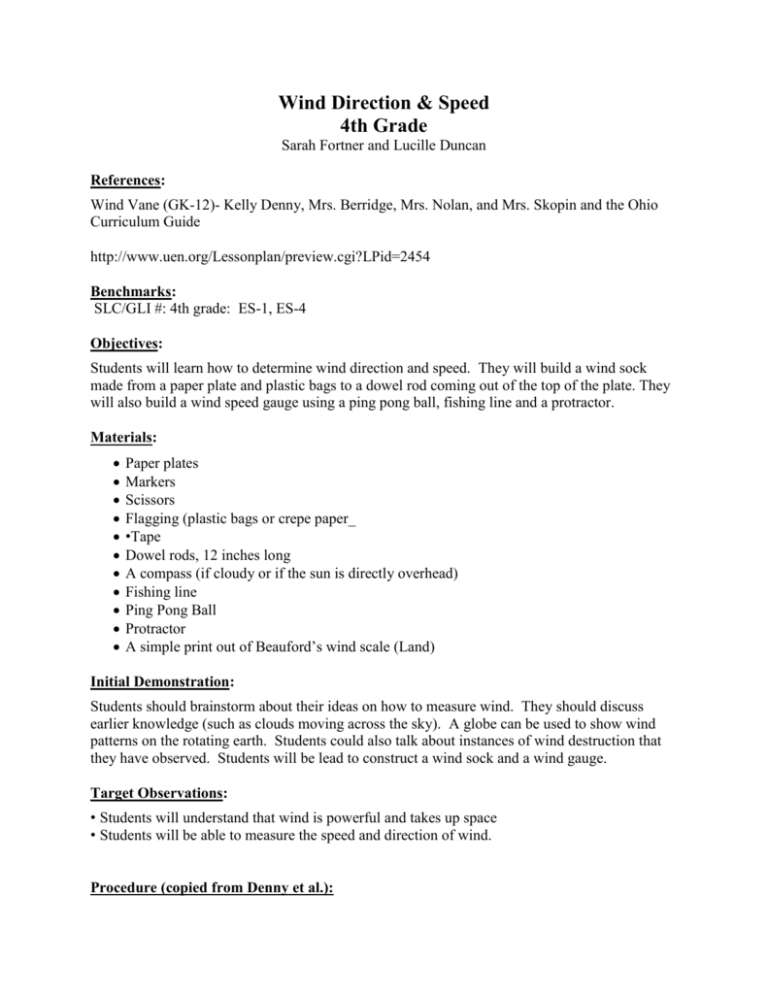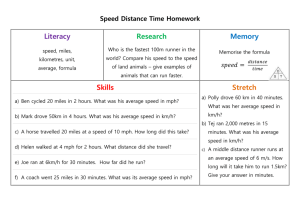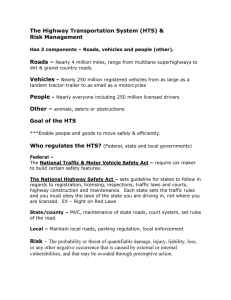Wind Direction & Speed - Home | gk-12
advertisement

Wind Direction & Speed 4th Grade Sarah Fortner and Lucille Duncan References: Wind Vane (GK-12)- Kelly Denny, Mrs. Berridge, Mrs. Nolan, and Mrs. Skopin and the Ohio Curriculum Guide http://www.uen.org/Lessonplan/preview.cgi?LPid=2454 Benchmarks: SLC/GLI #: 4th grade: ES-1, ES-4 Objectives: Students will learn how to determine wind direction and speed. They will build a wind sock made from a paper plate and plastic bags to a dowel rod coming out of the top of the plate. They will also build a wind speed gauge using a ping pong ball, fishing line and a protractor. Materials: Paper plates Markers Scissors Flagging (plastic bags or crepe paper_ •Tape Dowel rods, 12 inches long A compass (if cloudy or if the sun is directly overhead) Fishing line Ping Pong Ball Protractor A simple print out of Beauford’s wind scale (Land) Initial Demonstration: Students should brainstorm about their ideas on how to measure wind. They should discuss earlier knowledge (such as clouds moving across the sky). A globe can be used to show wind patterns on the rotating earth. Students could also talk about instances of wind destruction that they have observed. Students will be lead to construct a wind sock and a wind gauge. Target Observations: • Students will understand that wind is powerful and takes up space • Students will be able to measure the speed and direction of wind. Procedure (copied from Denny et al.): 1. Draw a large, straight cross through the center of the top side of the plate. 2. Correctly label the directions N, S, E, and W at each end of the cross 3. Tape the dowel rod to the center of the plate so that it’s protruding vertically out of the plate, like a flagpole. 4. Tape 1-2 pieces of about 10 inch long streamer to the top of the dowel rod, as if they’re flags. 5. Take your wind vane outside and hold it out in front of you, parallel to the ground and turned so that the “N” on your wind streamer is pointing to the North; use the sun or a compass to make sure your facing the right direction. 6. Determine the direction of the wind: if the crepe paper blows to the south, the wind is coming out of the north. Target Observations: • Wind direction is determined based on the standard cardinal directions • We always measure the wind based on the direction it comes from. • The streamer moves when the wind blows because the wind is pushing the air, and the moving air pushes the streamers. Procedure 2 (modified from http://www.uen.org/Lessonplan/preview.cgi?LPid=2454): 1. Give each group of students a ping pong ball, string, and piece of tape. 2. Instruct the students to tape the string to the ping pong ball and tie the string to the center of the straight edge of the protractor. 3. Hold the protractor upside down so the string hangs past the 90 degree mark. 4. Hold the device in the wind. The wind will blow the ping pong ball and students can measure wind speed by using the following scale: * 90 degrees = 0 mph * 83 degrees = 6 mph * 75 degrees = 10 mph * 61 degrees = 15 mph * 50 degrees = 18 mph * 45 degrees = 19.5 mph * 35 degrees = 23.5 mph 20 degrees = 32.5 mph 5. Have students record their measurements to compare. 6. Students should note if trees, branches or leaves are blowing and compare Beauford’s visual wind scale with their wind gauge measurements (they should have excellent agreement) Target Observations: • Wind is a measurable quantity • We feel the wind because we actually feel the movement of the surrounding air against our skin. Summary: Wind is measurable. Students should have made their own wind socks and wind speed gauges to understand the movement of the air.







